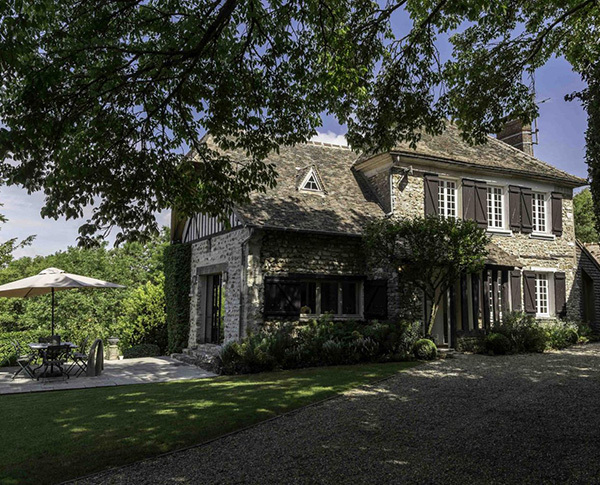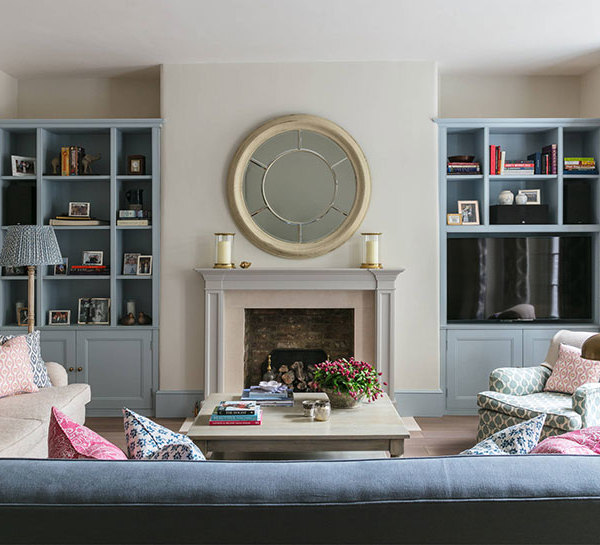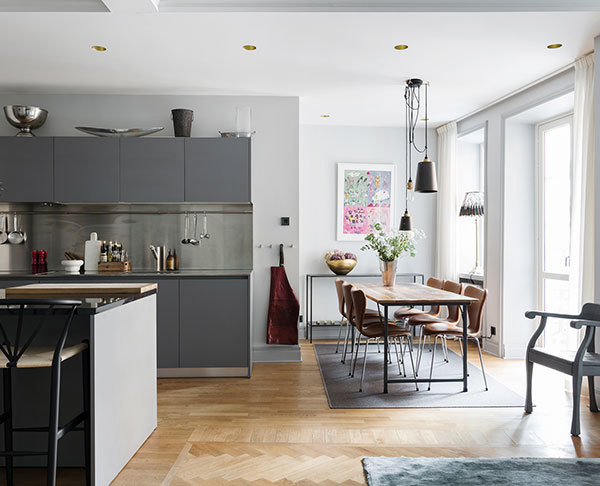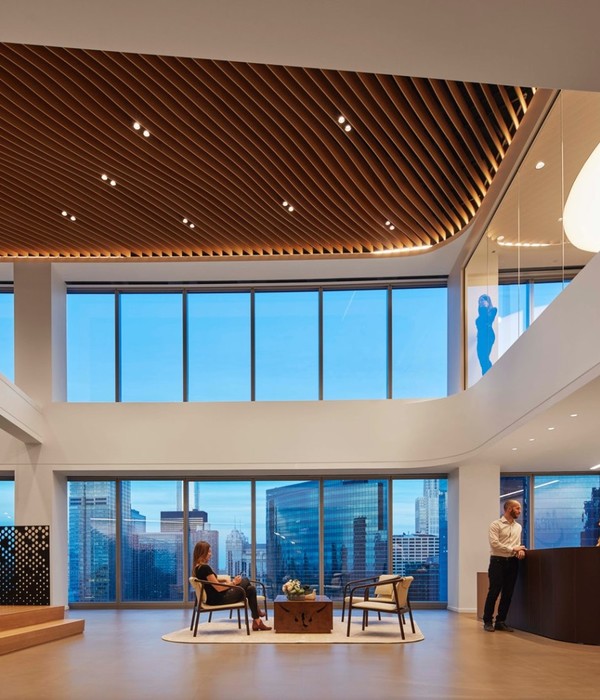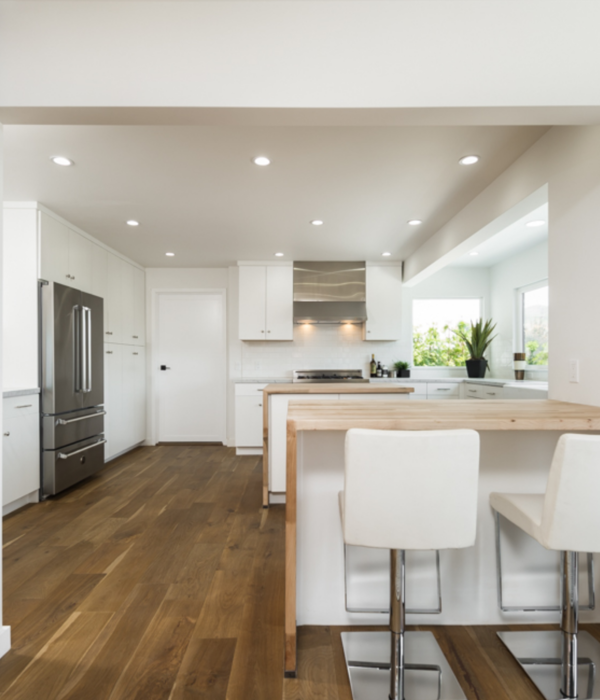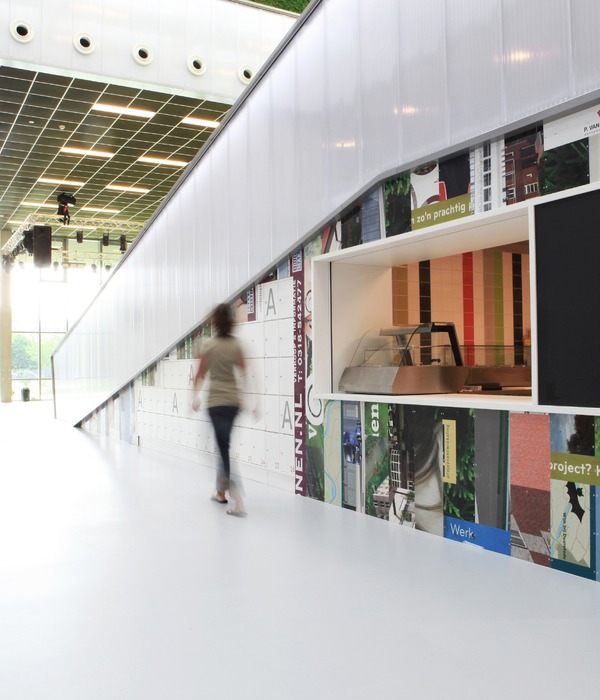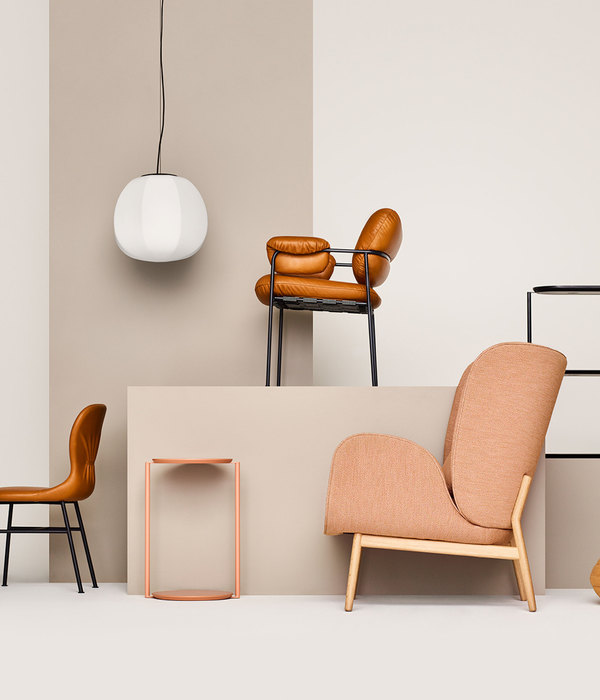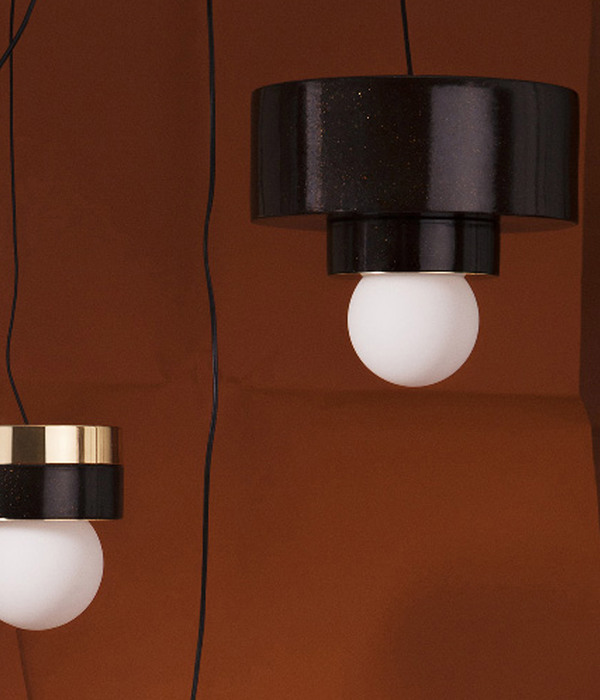在梅赫伦Leuvense Vaart运河沿岸,N-DP住宅散发出其独特的魅力:不对称的混凝土顶篷看似随意地敞开或关闭,营造出一种令人愉悦的、内向式的开放感觉。
This house along the Leuvense Vaart in Mechelen never ceases to fascinate. A seemingly random play of asymmetrical concrete canopies opens and closes the façade, creating a pleasing impression of introverted openness.
▼住宅外观,exterior view © Filip Dujardin
住宅与连贯的叙事 A house with a consistent story
倾斜的混凝土顶篷和三角形楼层的精确定位带来一种动态的观感,这种动态性是出于美学的需要以及对场地环境的呼应而产生的。项目所处的地块狭窄而深邃,一方面它与周围的住宅相距不远,另一面则拥有朝向运河与后方田野的开阔视野。一系列创造性的过程使住宅的设计理念得以实现,所有需要考量的参数均被统一到一个单一且连贯的叙事当中。
▼模型,model © Dennis De Smet
The dynamics created by the angled concrete canopies and the sophisticated positioning of the triangular storeys was an aesthetic necessity, designed in response to the environment in which the house was built. In this case, a narrow, deep plot with close proximity to neighbours, but also with an expansive view of the canal and the fields behind it. The concept of the house is the result of a creative process that takes all these parameters into account in a single, consistent story.
▼住宅外观,exterior view photos © Filip Dujardin
▼较为封闭的一侧立面,the more closed facade © Filip Dujardin
▼朝向运河与后方田野的开阔视野 © Filip Dujardin view to the canal and the fields behind the house
迷人的对比 Intriguing contrasts
住宅的每个楼层逐次后退并在角度上形成微妙的偏转,旨在为居住者提供私密性和安全感。这种扇状的内向式移动在建筑外部创造出一种有趣的效果,抵消了9米高的单一体量所带来的压迫感。同时,扇形的布局也能够尽可能地减少对邻居视野的阻挡。混凝土墙体上的大面积窗体带来令人兴奋的花园和河岸视野,同时为整个建筑赋予了人性化的尺度。
▼剖面轴测,isometric section © GRAUX & BAEYENS architecten
Each storey is set back in relation to the previous one and has been superimposed at a slightly shifted angle, with the intention of creating privacy and a sense of security for the residents. This fan-like movement inward also creates a playful effect that counters the monolithic appearance of the nine-metre-high building. At the same time, the fan shape is intended to cast as little shadow as possible on the neighbours. The breaches in the concrete walls in turn create exciting openings to the garden and the water. While the concrete construction is no less imposing than the ships that slowly pass by on the canal, the openings give the whole a human scale.
▼每个楼层逐次后退并在角度上形成微妙的偏转 © Filip Dujardin Each storey is set back in relation to the previous one and has been superimposed at a slightly shifted angle
▼河岸视野,view to the canal © Filip Dujardin
▼住宅夜景,night view © Filip Dujardin
用于建造房屋的混凝土同时成为了支撑结构,将外墙动态的开放感延续至室内空间。底层的混凝土楔形空间作为车棚,将住宅的入口隐藏起来,避开了路人的视线。但与此同时,大型的旋转门和向外伸出的混凝土台阶又给人一种温馨的、被迎接的感觉。
The concrete from which the house is built also forms the supporting structure. This made it possible for the opening movement of the facades to be continued in the interior. The lowest concrete wedge serves as a carport and hides the entrance of the house from the view of passers-by. However, anyone who rings the bell will instantly feel welcome thanks to the large, pivoting door and the inviting concrete entrance step.
▼入口区域,entry space © Filip Dujardin
▼底层的混凝土楔形空间作为车棚,将住宅的入口隐藏起来 © Filip Dujardin The lowest concrete wedge serves as a carport and hides the entrance of the house
▼主入口,entrance © Filip Dujardin
楼梯、衣帽间和洗衣房均设置在混凝土核心区内,并且与围绕在核心筒周围的二层起居空间相连。厨房沐浴在晨光中,客厅则通过相连的阳台捕捉到每天的最后一缕阳光。卧室位于顶层,设计以实用为原则,且都敞开于漂亮的露台。
The stairs, together with a cloakroom and laundry room, are located in the concrete core of the house and lead to the living areas that nestle around the central part on the first floor in a single, flowing movement. The kitchen is bathed in the morning sun, while the living room with adjoining terrace catches the last rays of the sun. The bedrooms in the top storey are primarily functional and all open onto a beautiful terrace.
▼入口旋转门,the pivoting door © Filip Dujardin
▼厨房和餐厅,kitchen and dining area © Filip Dujardin
荫蔽与开放共存 Sheltered and open at the same time
住宅中的家具均是定制设计,包括储物柜和壁炉墙等。封闭性与开放性的共存关系同样表现在室内空间当中,并通过低调且平衡的材料选择而得到加强:墙面与天花板采用了质地温暖的黏土石膏,与未经处理的混凝土墙面和木质饰面形成和谐搭配。
The furniture in the house was custom designed, including the storage units and fireplace wall. The special symbiosis between secure enclosure and openness also comes into its own in the interior. A feeling that is enhanced by a balanced use of understated materials, alternating the warm texture of clay plaster on walls and ceilings with the raw concrete and wooden finishing that are also used in the external facades.
▼客厅,living room © Filip Dujardin
▼混凝土墙面和木质饰面,the raw concrete and wooden finishing © Filip Dujardin
沉静的材料和色彩搭配渗透到了建筑的每一个细节。对于楼梯扶手的部分,设计团队并未采用现代住宅中常用的玻璃材料,而是选择用镀锌钢来呼应立面上的护栏细部,为空间赋予更加人性化的尺度。外部楼梯和大门使用了与护栏相同的钢材,是专门为这栋住宅而设计。大门的一个有趣细节体现在其裸露的滚轮上,镂空式的设计在不经意间带给人们一种惊喜的感觉。
The tranquil material palette of the house has been carried over into the smallest details. For the balustrades, we deliberately did not work with modern glass, but with galvanized steel. This aligns the enclosure and the breaches in the facade with the human scale of the residents, in an otherwise imposing building. The steel of the balustrades is reflected in the external staircase and gate, which were specially designed for this house. A nice detail is that in this gate, just like in the facade of the house, recesses have been applied that make the wheels of the gate visible and give it a surprising touch.
▼从客厅望向楼梯,view to the staircase from the living room © Filip Dujardin
▼露台,terrace © Filip Dujardin
▼可以看到裸露滚轮的大门,the gate visible wheels © Filip Dujardin
▼平面图,floor plans © GRAUX & BAEYENS architecten
▼剖面图,sections © GRAUX & BAEYENS architecten
▼剖面细部,detailed section © GRAUX & BAEYENS architecten
{{item.text_origin}}

